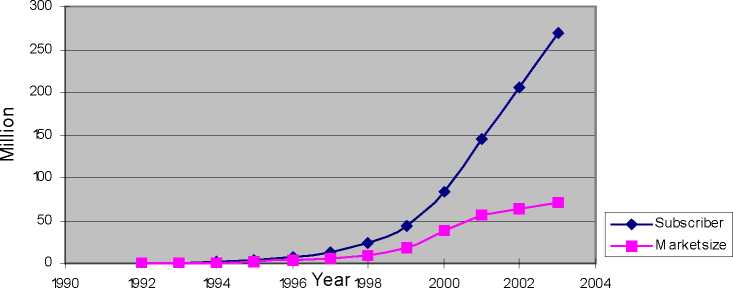Figure 4. Growth of mobile phone subscribers and handset market size

Source: China Statistical Yearbook (various years); MII website, http://www.mii.gov.cn/mii/hyzw/tjxx.html
More important, the inherent nature of the mobile phone business was such that it created
opportunities for latecomers to technologically leapfrog over early starters and assume industry
leadership in certain fields. China’s 2G (second generation) mobile phone domestic producers
could compete with foreign rivals at the chip-designing level because of technological patents.
But many companies without chip technology, such as Samsung and LG, also established their
position by succeeding in developing new application software and exterior designs. China’s
domestic producers also mastered design capability quickly. Now, China’s domestic firms
provide more new GSM handset models than their foreign competitors. Bird claims two-thirds
of its handsets are designed in-house. It launched 35 new models in 2003 and another 50 were
scheduled for 2004. In contrast, Nokia launched only 14 GSM models in China in 2003.
Nokia's market share has declined steadily in China from 30% in 2000 to 13% in 2003, due
partly to insipid flat design and lack of innovation (Sun, 2003).
Due to technological change China’s firms are at the same starting point with foreign
competitors for 3G mobile phone technologies. It is not impossible for China’s domestic firms
to become involved and then control core technologies in some areas for 3G. In fact, China had
China's Mobile Handsets FINAL DRAFT 2006.sph ERSA2006 Greece
15
More intriguing information
1. SLA RESEARCH ON SELF-DIRECTION: THEORETICAL AND PRACTICAL ISSUES2. Human Resource Management Practices and Wage Dispersion in U.S. Establishments
3. The name is absent
4. Migrant Business Networks and FDI
5. Portuguese Women in Science and Technology (S&T): Some Gender Features Behind MSc. and PhD. Achievement
6. Bird’s Eye View to Indonesian Mass Conflict Revisiting the Fact of Self-Organized Criticality
7. Non-farm businesses local economic integration level: the case of six Portuguese small and medium-sized Markettowns• - a sector approach
8. Text of a letter
9. The name is absent
10. The Provisions on Geographical Indications in the TRIPS Agreement